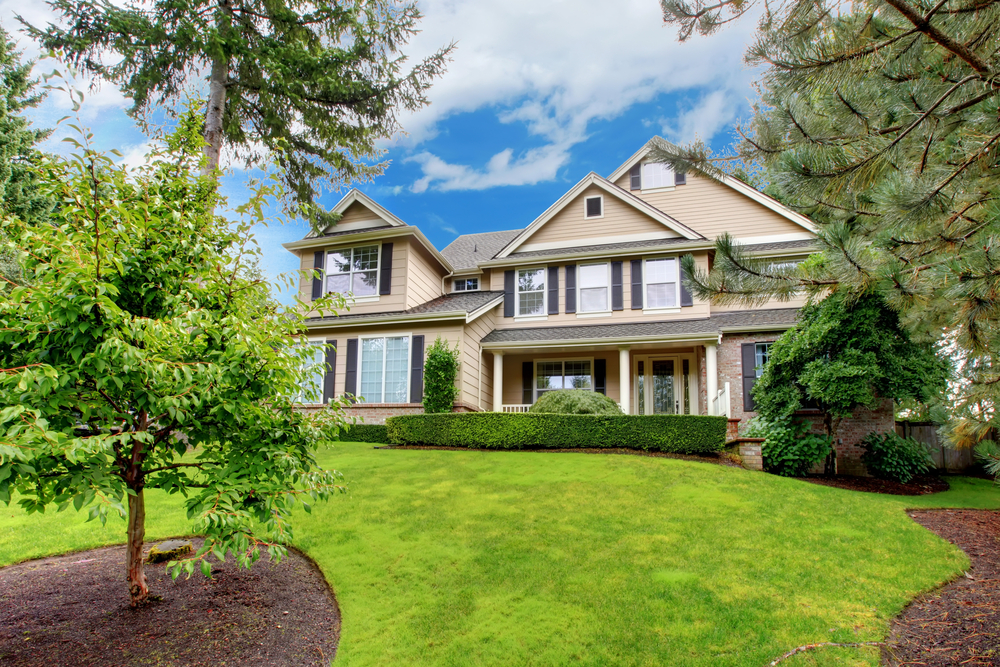Many older adults downsize to one-level living spaces, like a single-family ranch, condo, or townhome, hoping to remain in their homes for as long as they can as they age. Homeowners with multilevel houses can age in place, too, but their homes may need some alterations to become more accessible for senior living.
Modifications to make a multilevel home more accommodating to independent living might involve anything from minor adjustments to extensive remodeling. Making incremental changes can help spread the cost of adapting the property over time, which could be ideal for those approaching retirement but who may still have adult children living at home.
Here are some key areas to consider when modifying a multifloor home for post-retirement living.
Create a First-Floor Suite
If space and your retirement finances allow, consider converting a main-level room like an office or a den into a master bedroom, preferably with access to a bathroom. Centralizing your primary living quarters on one floor will reduce your need to go up and down stairs repeatedly and regularly. If possible, move laundry to the main level as well if it’s in a basement.
An existing first-floor bathroom may need to be adapted to become a primary bathroom, with features such as a higher toilet, grab bars, or a lower sink and vanity to accommodate a wheelchair or other mobility devices. Step-in bathtubs can also be replaced with zero-step showers.
Safer Stairs
Stairs are the obvious main difference between a multilevel and single-level home, and improving safety begins with assessing hazards around indoor and outdoor steps and staircases.
Staircases should be brightly lit, especially the top and bottom steps, where many accidents happen. Loose or deteriorating stairs must be repaired or replaced so they’re uniform and sturdy across the tread.
Painting the riser (the vertical portion of the stair) with a contrasting color helps with depth perception, making it easier to see where one stair ends and the next begins. In addition, add non-skid stair treatments like a secured carpet runner, grippy treads, or rubber mats to support footing. Handrails and banisters should be solid, in good condition, and securely installed into the walls on both sides of the staircase and floors.
Finally, don’t forget to address smaller sets of stairs around the property, such as steps at the front door or between a living and dining room. Indoor/outdoor ramps with a gradual incline that are permanently installed or portable for easier storage can reduce potential tripping.
Stairlifts, Platform Lifts, and Home Elevators
Stairlifts, platform lifts, and home elevators are other options that will make movement between floors of your multilevel home safer.
A stairlift (sometimes called a chairlift) is a fixed, battery-operated chair that runs along a track attached to the wall. The track can be custom-shaped if needed, depending on the curve of your staircase. A stairlift can be a good option for people who can move independently in and out of a chair but might have steadiness or stamina issues going up or down flights.
People who use a traditional wheelchair, motorized chair, or mobility scooter could consider an incline platform lift (IPL) or vertical platform lift (VPL). Platform lifts let a person stay seated in their mobility chair while moving safely from one floor to the next.
An IPL runs along tracks installed on both sides of a staircase, and it’s a good option only if your staircase is wide enough to accommodate it. Other spaces, such as homes with high-ceilinged foyers, might better accommodate a VPL, an independent structure that lifts vertically from the ground and avoids stairs altogether.
A final option, though pricey, is installing a home elevator, sometimes called a PVE or pneumatic vacuum elevator. A PVE is a fully enclosed, multistory, freestanding tube that works well in open-concept homes with high ceilings or atrium-like spaces. Before deciding if a PVE is right for your needs, ask a trusted realtor for their insight on how investing in a home elevator could affect your home’s resale appeal.
Use Tech for Safer Surroundings
Smart home tech offers an array of features that can particularly benefit older adults. For example, voice-activated controls are helpful for people with mobility or fine motor challenges. Adjusting a thermostat, turning lights on or off, checking the doorbell, or arming a security system with your voice is invaluable if it helps to avoid unnecessary travel up and down stairs. Other smart tech features translate the sound of a doorbell, alarm, or timer into a physical sensation, useful to those with hearing loss.
Personal emergency systems (PERS) have been used for decades to call for help in case of a fall or other emergency. These systems are becoming more sophisticated with newer advances. Watches, wristbands, and pendants can be synched with sensor technology installed throughout your home to detect a fall, monitor vital signs, or note periods of inactivity and notify the appropriate authorities or your “in case of emergency” contacts. Most PERS wearables are also outfitted with GPS to pinpoint your exact location. A consultation with a professional who specializes in aging-in-place solutions is a good place to start when considering which modifications are most important to make your multilevel home a space that supports your independence and safety.
How to Make Your Home Wheelchair Accessible
Do Not Do It Yourself: 4 Home Improvement Projects Best Left to the Pros


